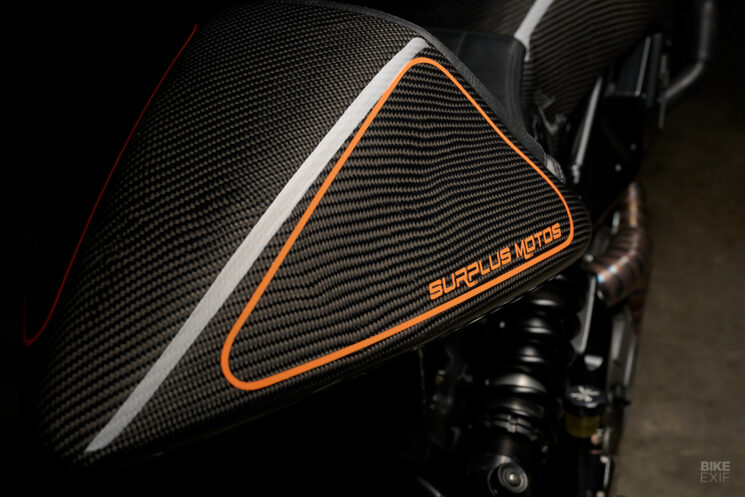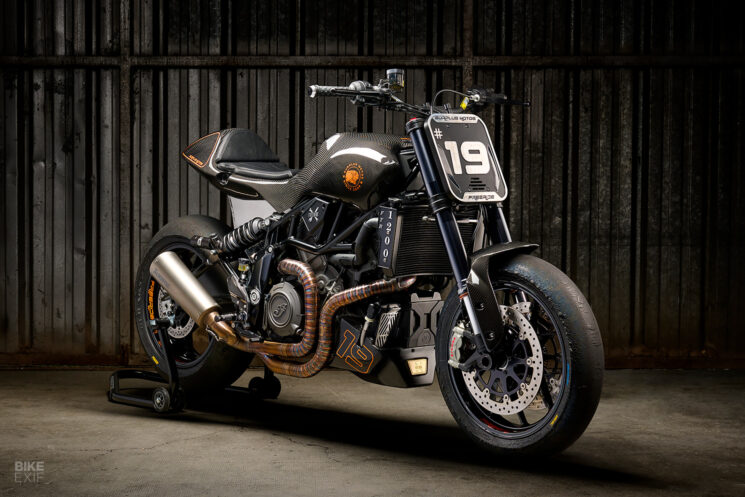
High-end parts can wreak havoc on a custom bike build budget, so it helps to have a source for good second-hand stuff. For Pierre Dhers at Freeride Motos in Southern France, that source is Surplus Motos.
Based just a few miles from the Freeride Motos workshop, Surplus Motos specializes in reconditioned motorcycle parts. They’ve been supplying Freeride Motos for years, so it was inevitable that the two companies would eventually collaborate on a project. You’re looking at the fruit of that collaboration—an Indian FTR 1200 street tracker inspired by the wild machines of the Pikes Peak International Hill Climb.
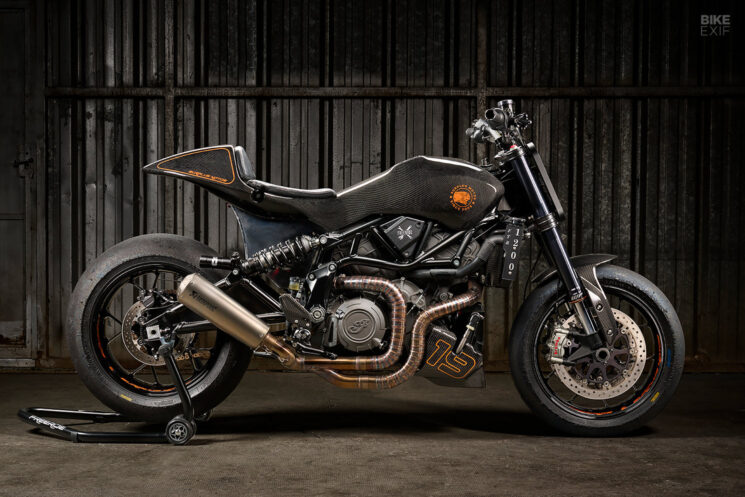
Pierre wanted to imbue the 2019-model Indian FTR 1200 with the same purposeful street tracker vibe that so many privateer Pikes Peak race bikes would exhibit (back when motorcycles were allowed on the hill). It’s a form-follows-function approach; Pikes Peak is a gnarly course with countless blind corners, so clip-on bars are a no and an upright riding position is advantageous.
With the general direction settled, Surplus Moto laid down the gauntlet. Their challenge to Pierre was to use as many repurposed parts as possible—and Pierre was happy to oblige.
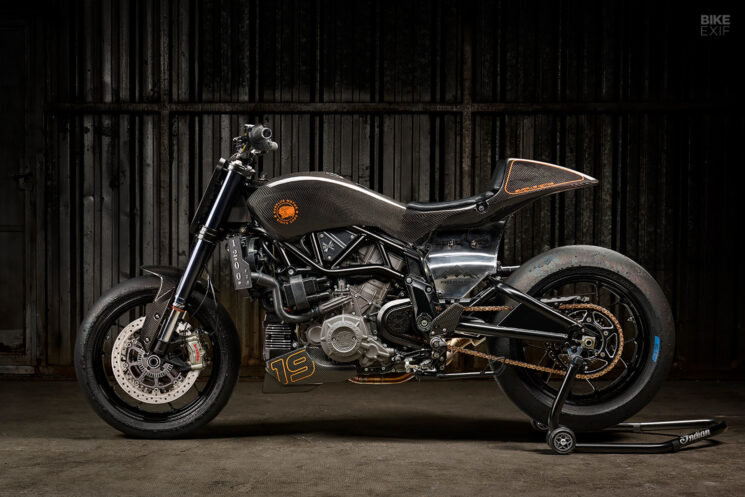
The work started with an overhaul of the Indian FTR 1200’s running gear. Surplus Moto sent over a complete KTM 1290 Super Duke R front end, complete with its adjustable WP forks, yokes, steering damper, wheel, and twin Brembo monobloc calipers. Pierre worked his magic to adapt the KTM setup to the Indian, then switched his focus to the rear of the bike.
The back wheel is from a KTM 790 Duke, but installing it was no easy job—especially since Pierre wanted to squeeze a 200-section tire onto it. The chain had to be re-aligned, and a bespoke brake caliper mount had to be fabricated.
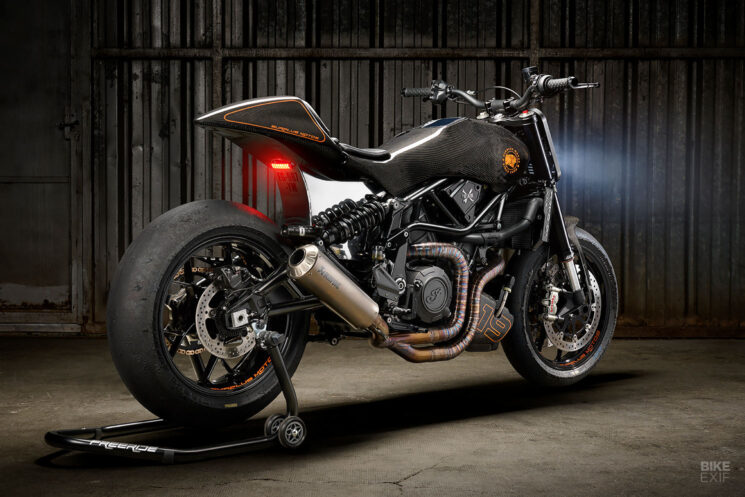
Next, Pierre welded gusset plates into the FTR’s tubular swingarm and wedged in a repurposed Öhlins rear shock. But most of the work is the stuff that you can’t see. The bike’s standard ABS has been eliminated, and its traction control system has been reinstalled with new sensors.
With the chassis sorted, Pierre got started on the FTR’s new one-piece body. The starting point was another old motorcycle part; the tail section from a 1996 Honda RS 250.

Pierre used the Honda tailpiece to make a fiberglass mold, before making a second mold from the FTR’s OEM tank covers, and a third from the dashboard. He then spent countless hours merging the three sections, filling the space between them, and sculpting a prototype of the new monocoque. Once that was done, a final mold was created to shape the actual body.
Pierre built the unit out of fiberglass and woven carbon, then propped it up on an aluminum fuel cell that doubles as the bike’s subframe. The filler cap sits further forward, just below where he’s incorporated the stock dashboard into the bodywork. A leather seat pad finishes off the tail, matching the myriad handmade leather details that are sprinkled all over this build.
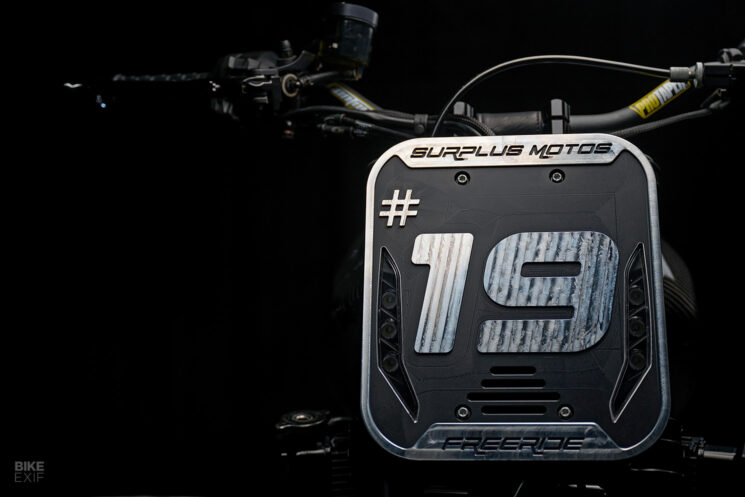
BMC, a CNC-machining shop in Brittany, lent a hand by creating a bunch of subtle aluminum parts to dress the bike with. The front number board is another CNC-machined aluminum item and features cutouts for an array of LED lights to shine through. (The number 19 is Pierre’s race number, and it’s the last year that motorcycles were allowed at Pikes Peak.)
Perched behind the new number board is a set of ProTaper handlebars, with fresh grips and Motogadget bar-end turn signals rounding out the kit. The ignition sits just behind the steering neck, trimmed with a tidy leather surround.
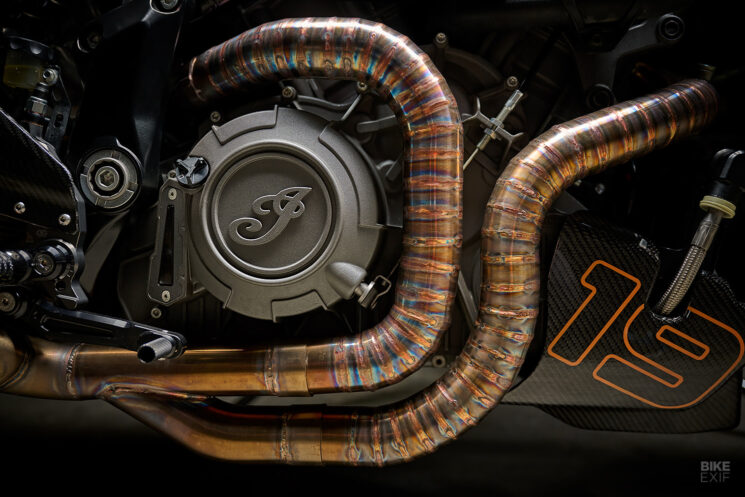
Pierre threw one more handful of second-hand bits at the FTR to get it over the finish line—including the chain guard, carbon fiber front fender, and Akrapovič muffler. He also collaborated with a friend at BAM (a welding workshop) to create the burly two-into-one stainless steel pie-cut exhaust system; it was a four-day job.
The FTR’s finishes are dead simple. Pierre treated the carbon fiber bodywork to a glossy clear coat, then added custom Freeride and Surplus branding in key spots—the perfect accompaniment to this FTR’s aggressive, purpose-built vibe.
Freeride Motos Racing | Facebook | Instagram | Surplus Motos | Images by Clement Lazzaro
